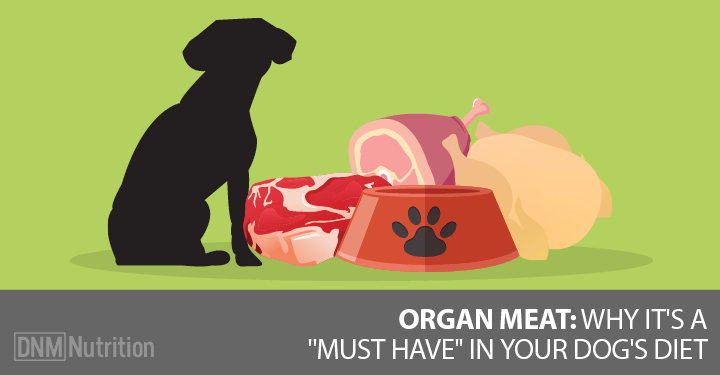A veterinarian submitted an article to us about raw feeding, and we sent it back. We don’t usually turn back content, but we did this time, and for a variety of reasons.
One of the reasons was the first impression we had of the author and the content. The article started with something to the effect of, “There is nothing more dangerous than a poorly prepared raw diet.”
While we don’t disagree that dietary imbalances can cause health issues in dogs, the fact remains that nearly 10,000 dogs were killed by contaminated kibble in 2007. In the face of this, it’s a pretty bold statement to say that nothing is more dangerous than a poorly prepared raw diet.
Raw feeders do have to be careful with what goes into their dogs however …
Meat and bone are lacking in many important nutrients. This is why it’s important to to to feed your dog all of the organs and all of the parts of an animal that they would eat had they tracked and killed that animal in the wild.
Although some organ meats can be difficult to find, they are the most nutrient-dense part of the animal.
Best of all, because organ meats are relatively inexpensive, they give you the most bang for your raw feeding buck.
Why Your Dog Needs Organ Meats
Compared to regular cuts of muscle meat, organ meats are more densely packed with just about every nutrient, including heavy doses of B vitamins such as: B1, B2, B6, folic acid and vitamin B12.
Organ meats are also loaded with minerals like phosphorus, iron, copper, magnesium and iodine, and provide the important fat-soluble vitamins A, D, E and K. It is important to note that animals raised outside on grass contain even higher levels of these essential nutrients than their grain-fed counterparts.
Try all of the organ meats, including lung, kidney, pancreas – anything you can get your hands on! You and your dog will get over the ickiness factor once you see the great health benefits!
A Natural Source Of Vitamin D
Vitamin D is one of the most important vitamins (actually a hormone precursor) and regulates numerous functions in the body.
Vitamin D deficiency is related to muscle weakness, fractures, common cancers, autoimmune diseases and infectious diseases. It’s especially important for those who live at higher latitudes and receive less sun (since sun exposure is the best source of Vitamin D).
Organ meats are known to have some of the highest concentrations of naturally occurring vitamin D of any food source, and including a source of organ meats into your dog’s diet once or twice a week, is a great idea – especially in the winter time when vitamin D deficiency is most likely to happen.
Organ meats also contain high amounts of the essential fatty acids such as arachidonic acid, and omega-3 fats, including EPA and DHA. Despite popular belief, fish and fish oils are not the only source of the important EPA and DHA… organ meats are loaded with these important nutrients.
Some dogs (and humans) find organ meats a bit icky at first. If your dog doesn’t like the taste or texture of organ meat, you can add smaller amounts of ground organ meats to your dog’s meals daily.
What About Liver?
People usually ask about the safety of liver.
It is the liver’s job to neutralize toxins in the body from drugs or other chemicals, so obviously the best choice for liver is the grass fed kind, without added antibiotics or hormones. But don’t let that scare you away from liver: it filters toxins but doesn’t store them. Muscle meats are typically higher in unwanted toxins than liver.
Liver is also known to be one of the most concentrated sources of natural vitamin A of any food. Natural vitamin A works to aid digestion, keeps sex organs/reproductive organs healthy, and is a powerful antioxidant.
Liver is a great source of folic Acid, B vitamins and especially vitamin B12, which help with fatigue, mental ability and nerve health, as well as preventing anemia.
Liver also contains one of the best, most usable sources for the body, of iron. Iron is necessary for many functions in the body including formation of hemoglobin, brain development and function, regulation of body temperature, muscle activity and catecholamine metabolism, to name just a few. A lack of iron will have a direct effect on the immune system; it diminishes the number of T- cells and the production of antibodies.
Iron is essential for oxygen to the blood cells. The primary function of iron is oxygen transport and cell respiration. For an anemic person, fatigue is one of the most noticeable symptoms. The iron in liver is one of most easily absorbable and usable sources of iron.
Do you have a performance dog? Liver contains an anti-fatigue factor, which is likely to do with improving the oxygen-carrying capacity of the blood cells; increasing endurance and strength in athletes of all species.
Liver contains many nitrogen containing compounds that are building blocks for DNA and RNA. In combination with the B vitamins, this makes it extremely helpful to people with Alzheimers or other types of dementia. Dogs can suffer from dementia as well, so be generous with the liver.
While liver is highly nutritious, its precious nutrients are very much affected by heat, so never cook it or the digestive enzymes and nutrients will be lost.
Get liver into your dog’s regular diet at least once a week if possible for maximum benefit of its high levels of nutrients. But don’t overdo it – if you feed liver as up to 5% of your dog’s diet, you’ll be doing great.
Don’t Forget The Heart
Because it’s a muscle, beef heart is somewhat similar to muscle meat, although it’s a heavier, more dense muscle. But heart meat packs more protein and unique nutrients.
The heart is a very concentrated source of the supernutrient, CoQ10. Coenzyme Q10 (CoQ10) is necessary for the basic functioning of cells, as well as optimizing the heart’s rhythm. CoQ10 levels are reported to decrease with age and to be lower in some patients with some chronic diseases such as heart conditions, cancer, diabetes, and immune disorders.
Beef heart also contains selenium, phosphorus and zinc, along with essential amino acids that help build muscle, store energy and boost stamina and endurance. The heart also contains twice as much collagen and elastin than regular meat, which is important for healthy joints.
If you’re feeding a commercial raw diet, look for whole animal choices so the valuable organ meats are kept intact. Making your own? Just make sure you ask for a wide variety of organ meats.
A little anatomy goes a long ways for raw feeders – find yourself a picture of the chicken or cow’s anatomy and note the size of the organs compared to the size of the animal. This should give you an idea of the amount of each organ your dog should receive. Overall, organ meats (not including heart) should make up about 15% of your dog’s total diet.
What are you waiting for? You can ask your butcher or abattoir for those cheap, icky parts and feel good about cutting your dog’s food costs while giving him a health boost at the same time!













